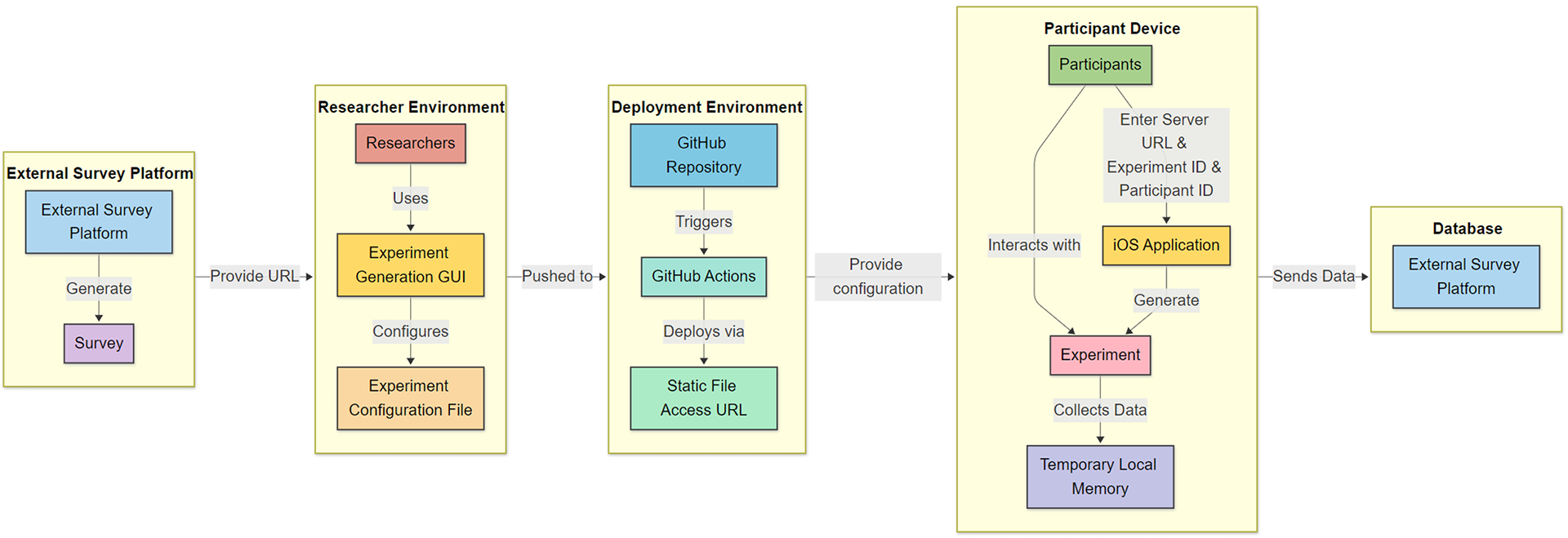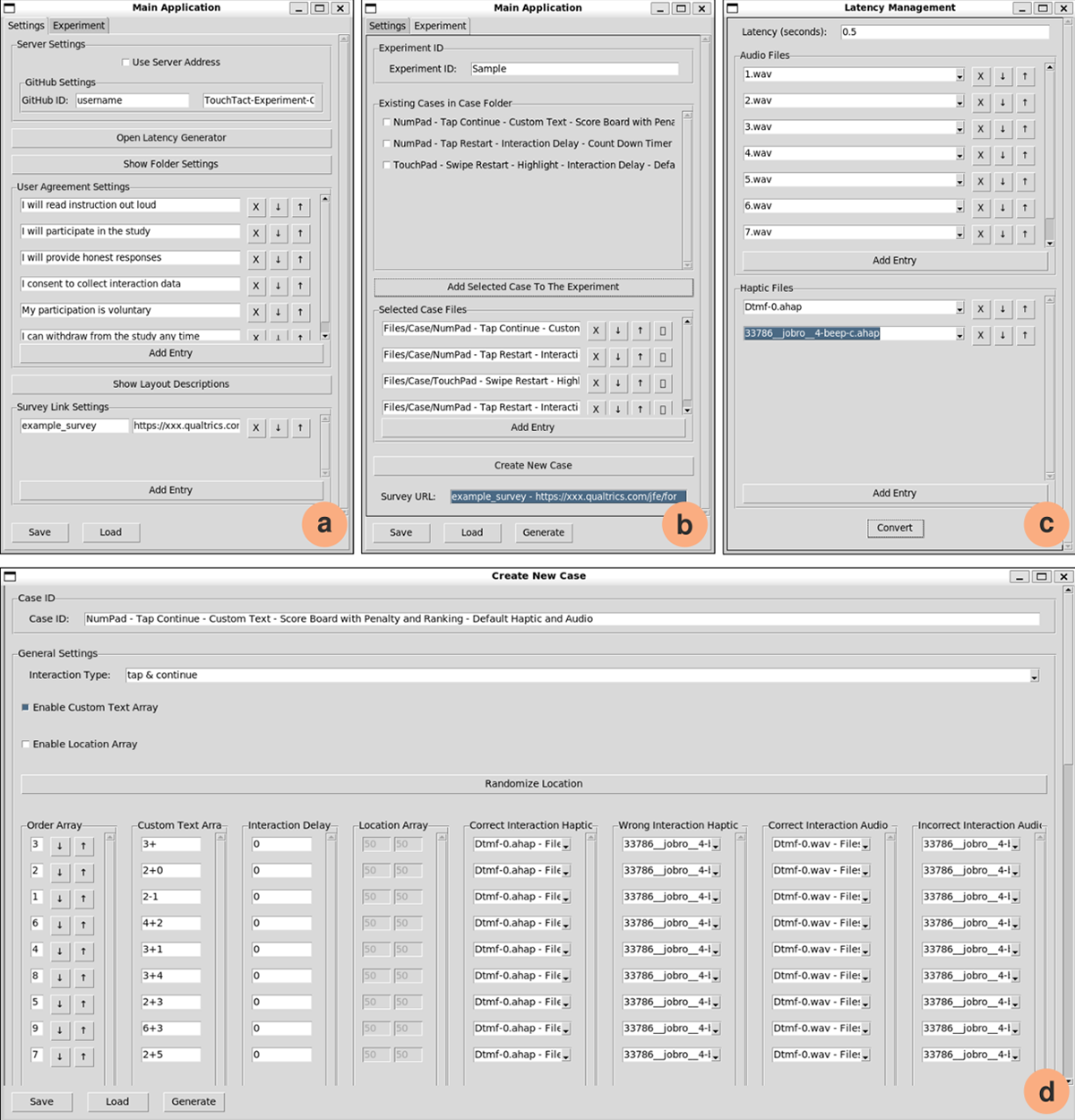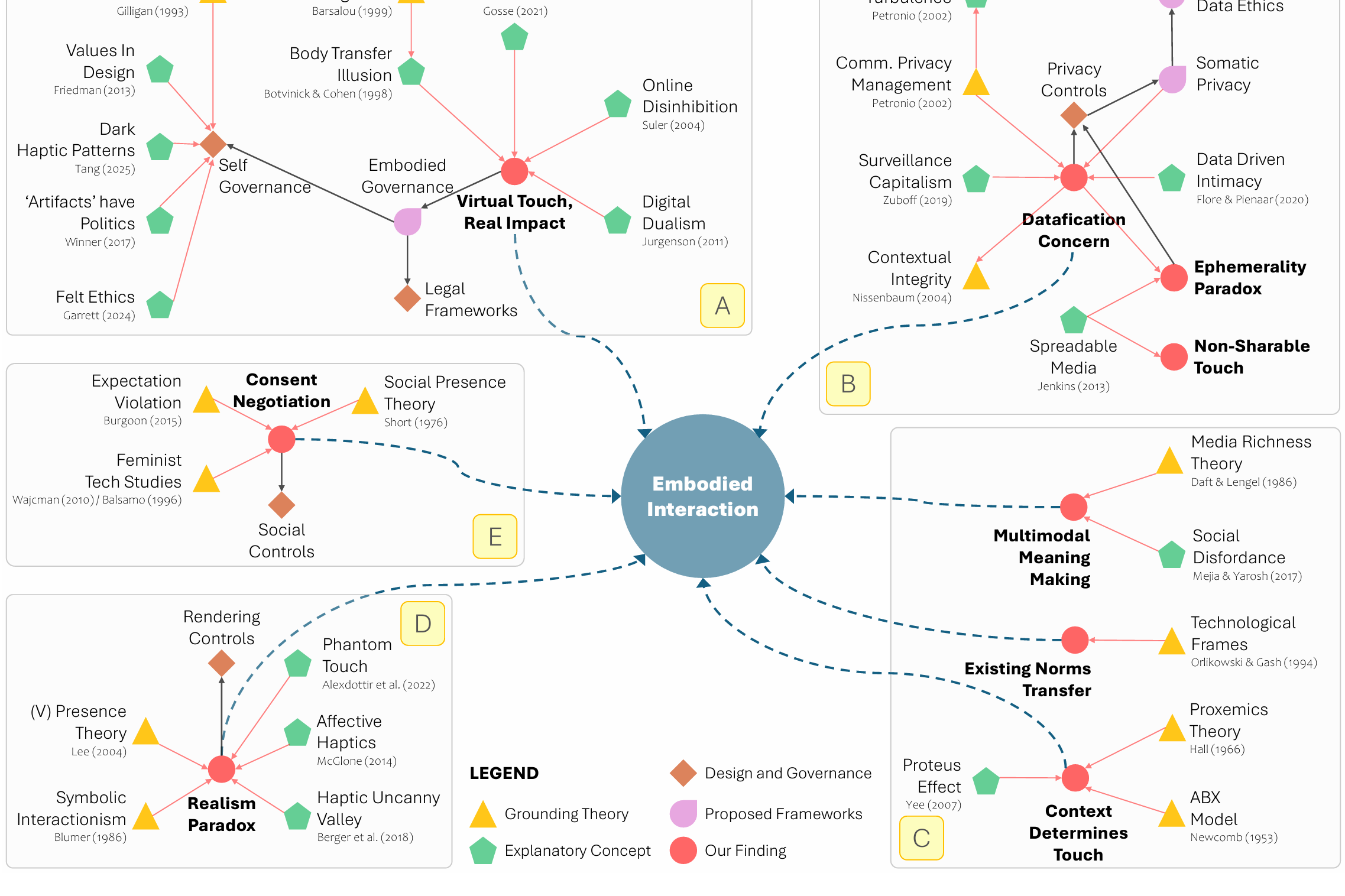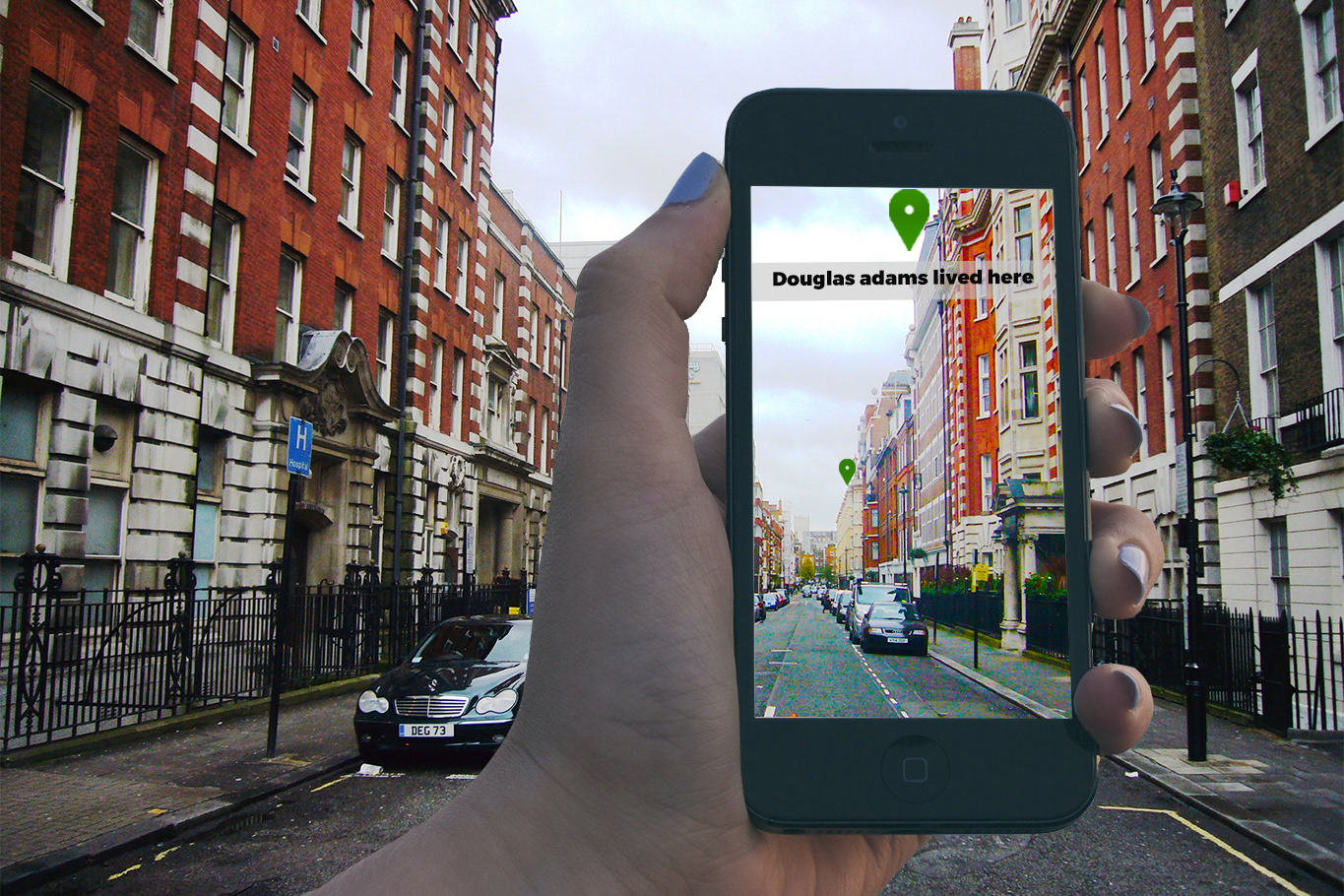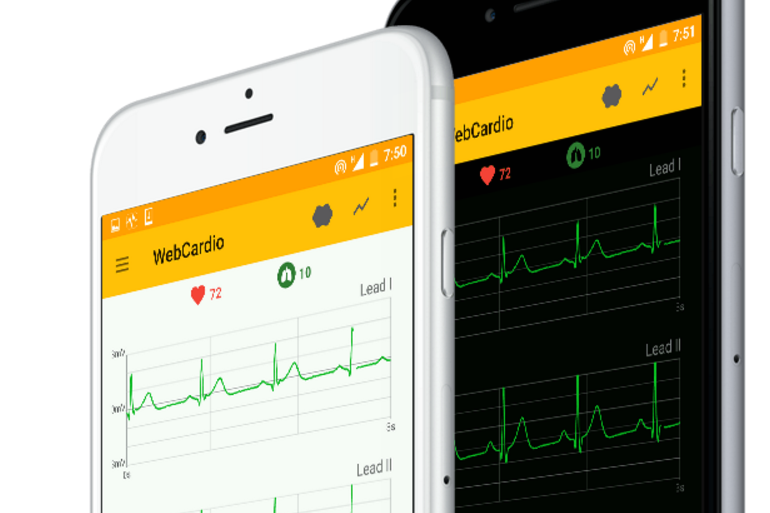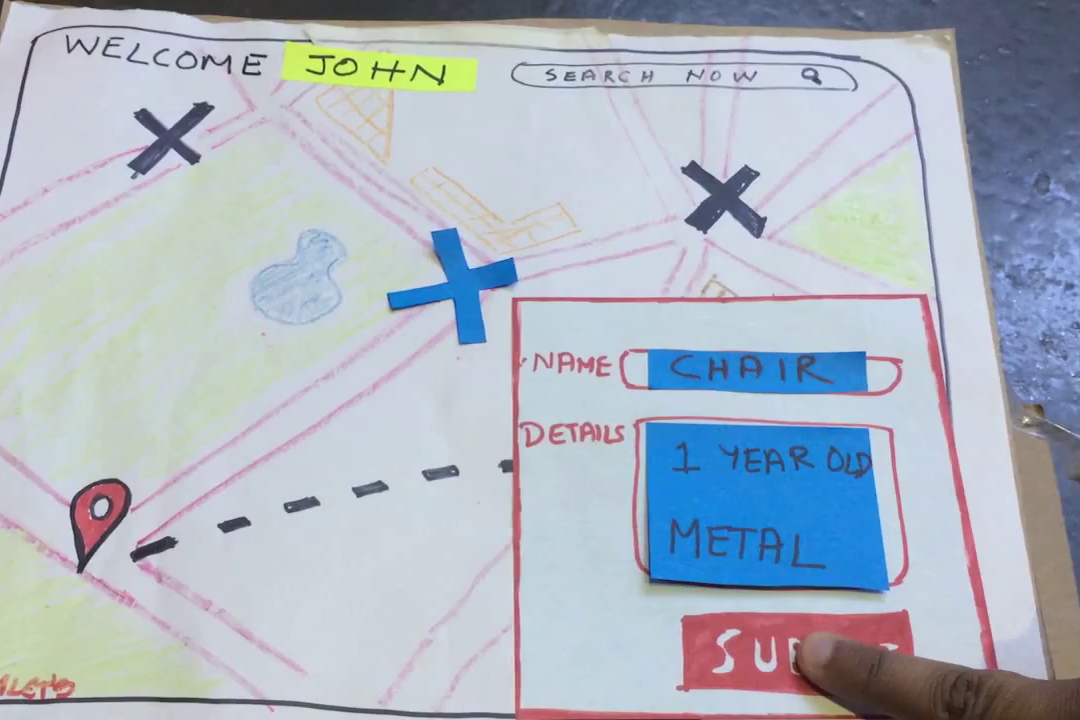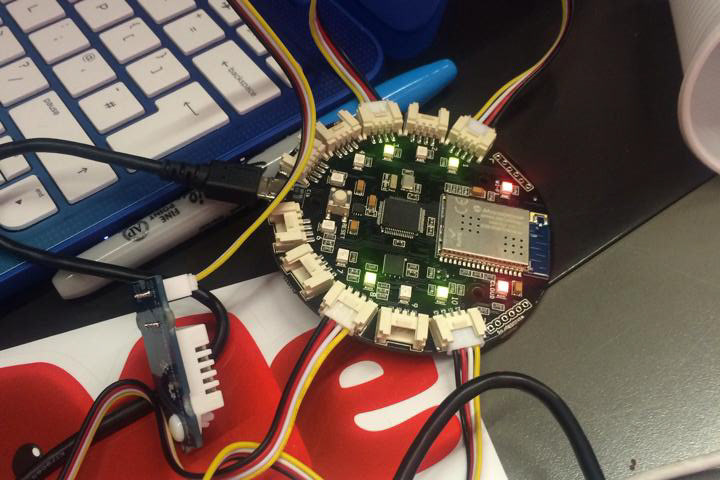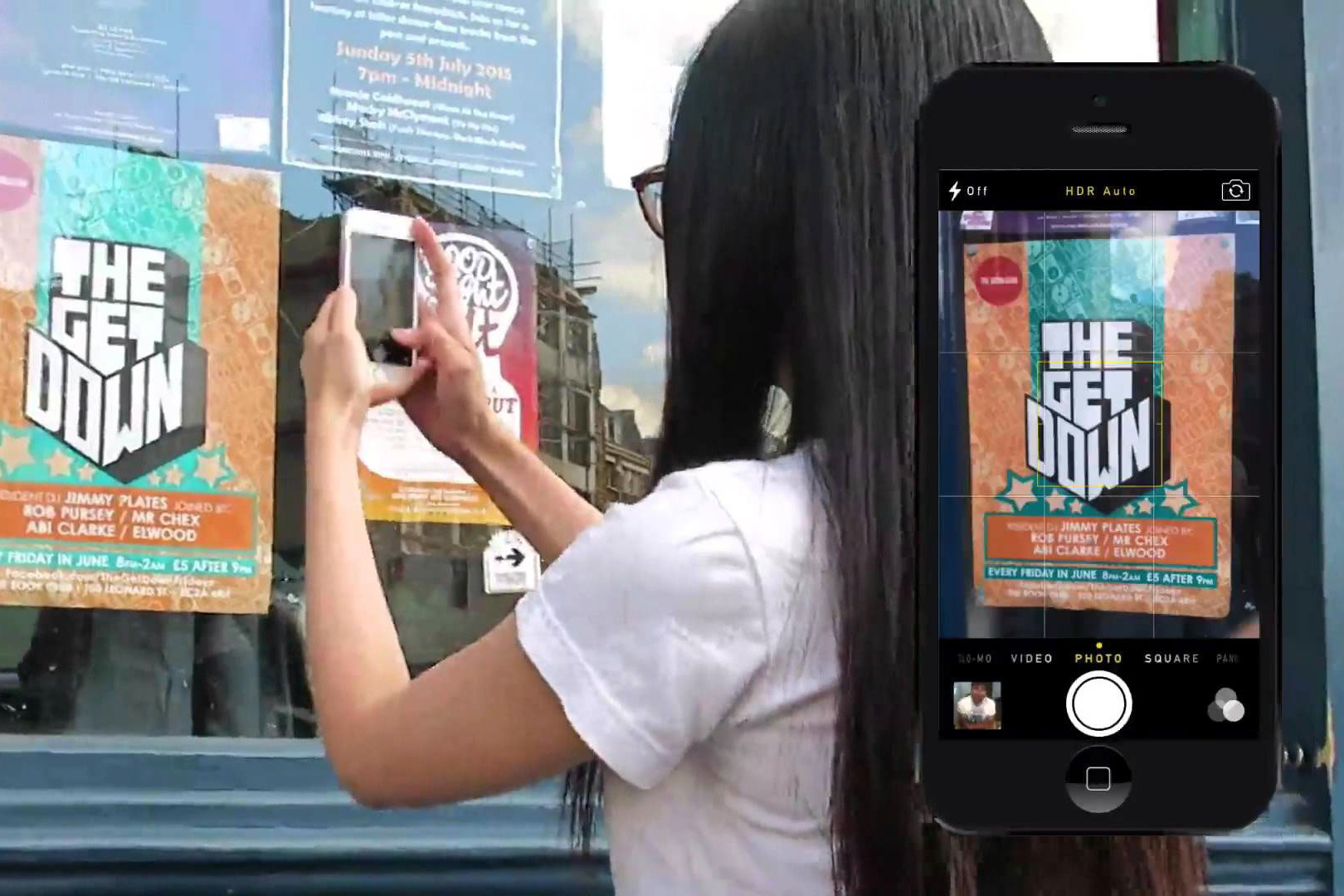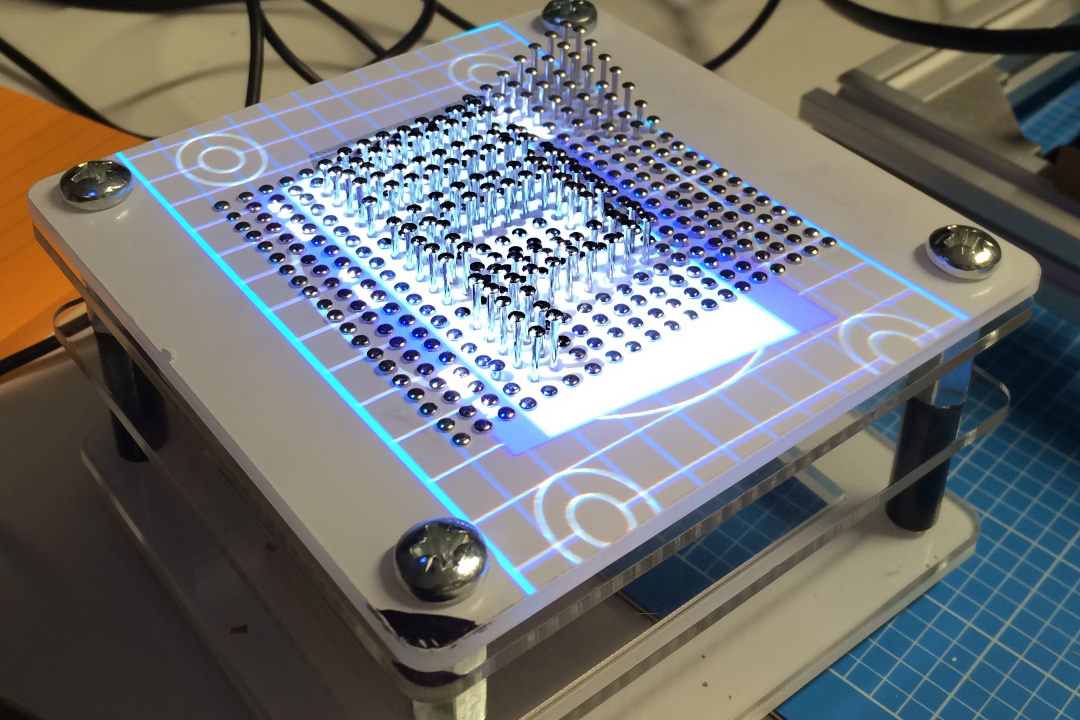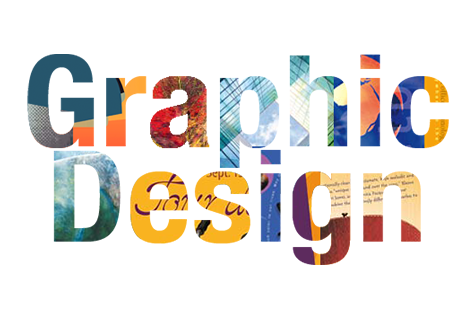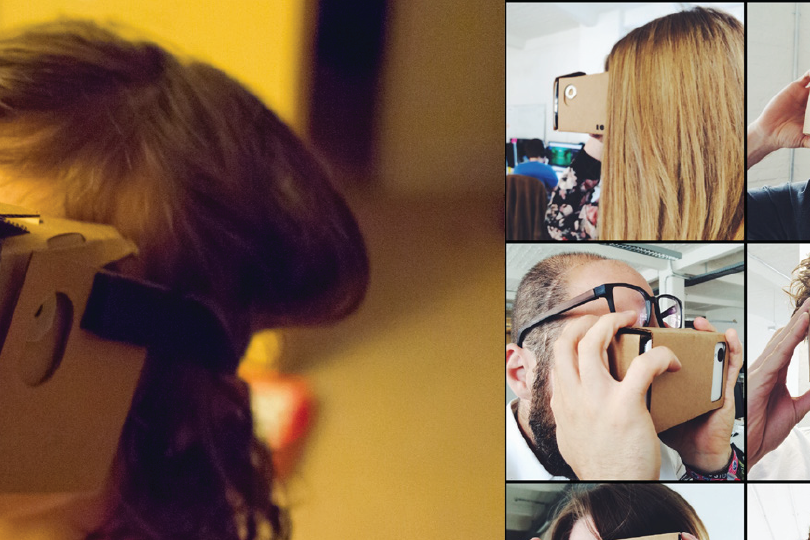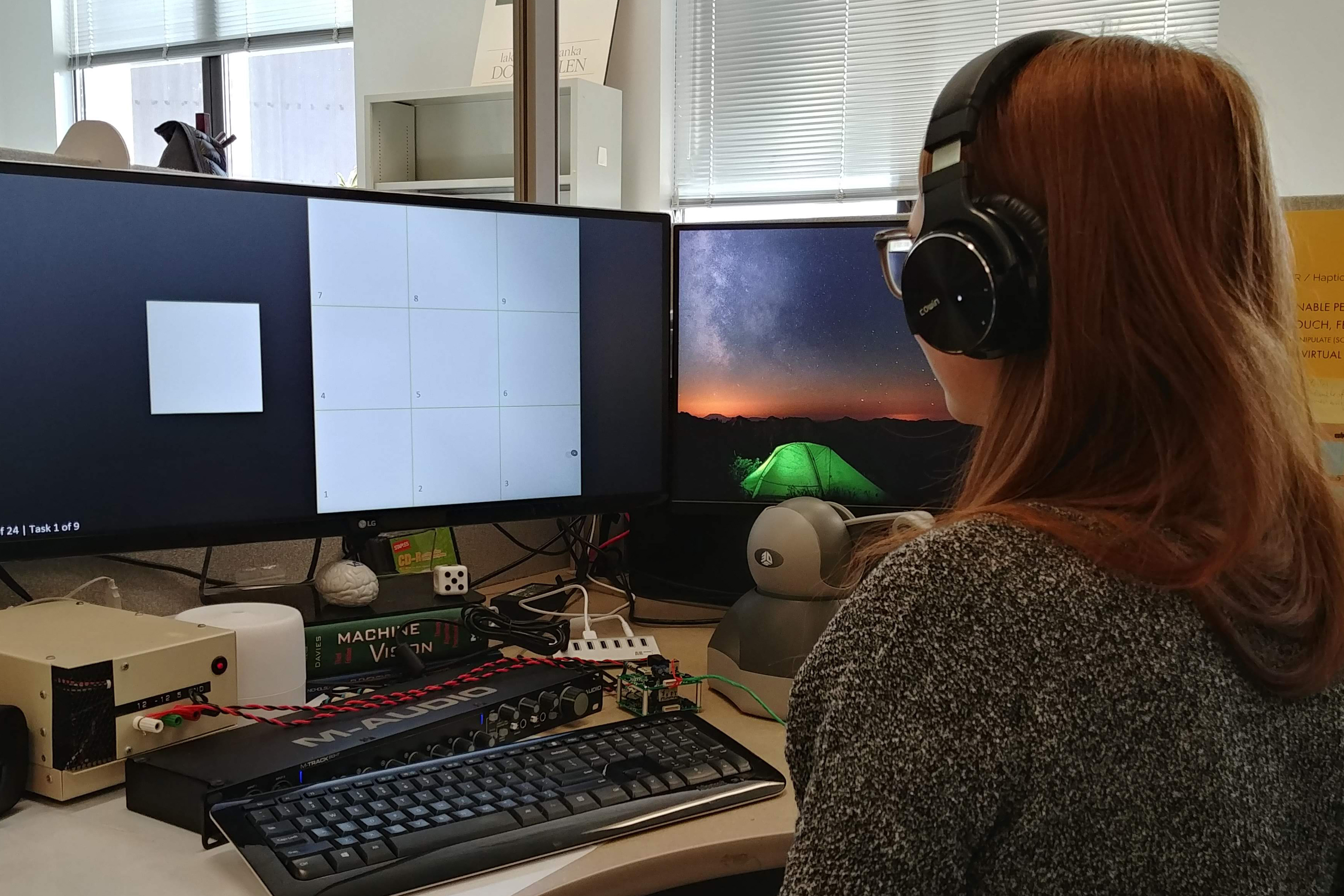Abstract
TouchTact is an open-source iOS toolkit enabling audio-haptic research in task-oriented mobile interactions without programming. Unlike traditional approaches requiring custom app development, TouchTact uses a single iOS application that dynamically adapts based on researcher-configured files. The toolkit consists of an Experiment Generation GUI and an iOS application supporting customizable layouts, interaction modes, and performance metrics with integrated audio-haptic feedback. We validated TouchTact through three demonstration studies (n=36) examining gamification, timers, and latency effects; usability evaluation with (n=12) haptic researchers (SUS=79.38); a researcher-focused deployment workshop (n=8) confirming end-to-end functionality; and coverage analysis of 19 prior studies demonstrating support for established measurement paradigms. TouchTact enables rapid experiment iteration, enabling researchers to deploy new conditions within hours rather than weeks. The toolkit supports diverse research from vibration threshold detection to gamified interaction studies, democratizing mobile HCI research by eliminating programming barriers while maintaining experimental rigor through standardized data collection and reproducible configuration files.
Motivation
Conducting rigorous studies on audio-haptic feedback in mobile contexts is slow and resource-intensive, often requiring custom software development for each new experiment. This creates a significant barrier for HCI researchers who lack specialized programming expertise. TouchTact aims to democratize this research area by providing an open-source, no-code toolkit that allows for the rapid configuration and deployment of diverse, task-oriented mobile interaction studies.
Process
We validated the TouchTact toolkit using a multi-faceted approach. First, we conducted three demonstration studies (n=36) to showcase the toolkit's capabilities. Participants used the TouchTact iOS app to perform a sequential button-pressing task 18under various conditions configured entirely through the GUI. These studies successfully measured the performance impact of:
1. Gamification: The interplay between scoring and haptic feedback.
2. Time Pressure: The effects of count-up versus countdown timers.
3. Latency: The impact of a 500ms delay in audio and haptic feedback.
2. Time Pressure: The effects of count-up versus countdown timers.
3. Latency: The impact of a 500ms delay in audio and haptic feedback.
Second, we performed a usability evaluation with 12 haptic researchers, which resulted in a good System Usability Scale (SUS) score of 79. Finally, an end-to-end deployment workshop with 8 researchers confirmed they could successfully create, deploy, and collect data for their experiments using the complete TouchTact pipeline.
Links
TouchTact iOS Application : https://github.com/HaRVI-Lab/TouchTact-iOS-App
TouchTact Experiment Generation GUI: https://github.com/HaRVI-Lab/TouchTact-Experiment-Generation-GUI
TouchTact Experiment Generation GUI: https://github.com/HaRVI-Lab/TouchTact-Experiment-Generation-GUI
